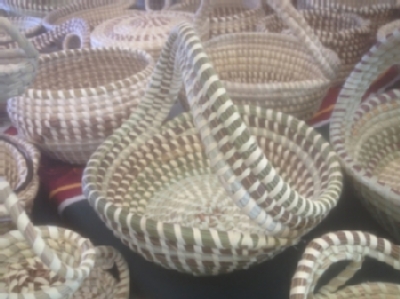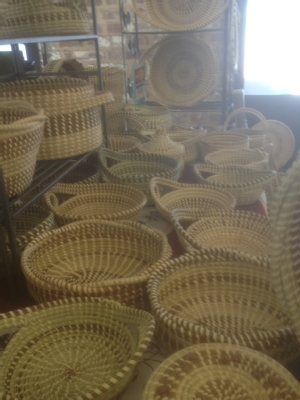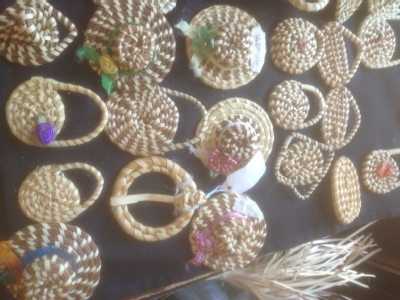Africana Eco-Tourism
Sweetgrass Baskets in the South- by Akshay Deverakonda
The Deep South. Many thoughts come to my mind when I think of it. I think of a part of the United States rooted in tradition. With regards to tradition’s best face, I thought of strong communities and strong family ties, of sweet tea, boiled peanuts, and rich southern drawls. But with respect to tradition’s darker side, I also thought of a continuing presence of prejudice, discrimination, and bigotry, a vast ocean of which I could feel lapping at my toes even as far north as Williamsburg in southeastern Virginia. Even up there, I was occasionally ostracized due to my South Asian heritage and Hindu beliefs. I had never been south of Virginia for an extended period of time, and so it was that I looked forward to my trip to Charleston, South Carolina, with a mix of excitement and slight trepidation.
A hustle and bustle of activity greeted me as I stepped into the Charleston Market, a massive collection of crafts, tourists, and vendors eager to share their wares. Different souvenirs beckoned to tourists hungry for a keepsake. “Charleston-opoly” peeked out from under a shelf. A big book of “Great Southern Houses” stood imposingly on its stand. As I wandered past many displays, several yellow/green baskets modestly placed on a table caught my eye. They were beautifully woven with spirals built into the actual threads composing the basket. There were different shapes, tiny baskets that could probably hold a couple marbles sitting alongside huge baskets that could have probably held an immense amount of cotton in an earlier age. Unlike many of the surrounding displays, they had no fancy labels or decorations.
These charming baskets spoke for themselves.
I stayed to further examine these baskets. The vendor, a middle-aged black man, caught my eye and stepped near me, opposite the table. We started talking. It turned out that these beautiful baskets were called sweet-grass baskets. As more customers came to the table, the vendor quickly handed me a yellow brochure and scooted off. I walked down the aisles between other tables, barely avoiding other shoppers as I started to read into the surprising legacy of the sweet-grass baskets. How slaves brought to the United States smuggled sweet-grass baskets in their clothes. How they kept sewing them with the new grasses in America to tie themselves to their Western African heritage. How sweet-grass basket weaving was a maternal tradition, passed down occasionally to sons but always to the daughters. How today, coastal development was threatening the habitat of the grasses on which the makers relied. As a member of the Indian diaspora, I had always taken pride in my culture and how it tied me to India. However, reading these stories was a humbling experience. Despite their forced migration, the slaves maintained ties in a way that I, nor my fellow second-generation Americans, could ever match.
On a single, folded piece of paper I gained a glimpse into an ancient heritage that thrived in the souls of many as their physical bodies were forced into bondage. Tradition was indeed alive and well in the South, but in more unexpected and subtle ways than I had imagined possible. Tradition was a core of Southern identity, but it was also a means for holding onto identity, even in the face of terrible conditions. I saw, for a moment, the bonds of a community that held tightly to each other as closely as the tightly-knit threads of a sweet-grass basket.

















